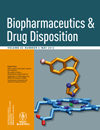
BIOPHARMACEUTICS & DRUG DISPOSITION
Scope & Guideline
Advancing the Science of Drug Disposition
Introduction
Aims and Scopes
- Pharmacokinetics and Pharmacodynamics:
The journal emphasizes studies that explore the pharmacokinetic and pharmacodynamic profiles of drugs, including their absorption, distribution, metabolism, and excretion (ADME) characteristics in various populations and conditions. - Physiologically-Based Pharmacokinetic (PBPK) Modeling:
A significant focus is on the development and application of PBPK models to predict drug behavior across different species and populations, facilitating better drug development and personalized medicine. - Drug-Drug Interactions and Metabolism:
Research on the interactions between drugs, particularly those mediated by metabolic enzymes and transporters, is a core area of interest, providing insights into safety and efficacy. - Biopharmaceutical Characterization:
The journal publishes studies on the biopharmaceutical properties of drug formulations, including novel drug delivery systems and their impact on pharmacokinetics. - Clinical Applications and Case Studies:
It also includes clinical studies that illustrate the application of pharmacokinetic principles in real-world settings, particularly in special populations such as pediatrics and the elderly.
Trending and Emerging
- Integration of Artificial Intelligence and Machine Learning:
Recent publications show a growing trend in the application of AI and machine learning techniques to enhance drug development processes, particularly in predicting pharmacokinetic behaviors. - Focus on Special Populations:
There is an increasing emphasis on pharmacokinetics in special populations, including pediatrics, geriatrics, and patients with comorbidities, reflecting a broader understanding of individualized therapy. - In Vitro-In Vivo Extrapolation (IVIVE) Studies:
The use of IVIVE approaches to predict human pharmacokinetics from animal data is trending, which aligns with the need for more efficient drug development pathways. - Advancements in Drug Delivery Systems:
Innovative drug delivery methods, such as nanotechnology and sustained-release formulations, are gaining prominence, focusing on improving bioavailability and therapeutic outcomes. - Environmental and Ecological Pharmacokinetics:
Emerging research is increasingly exploring the pharmacokinetics of drugs in environmental contexts, addressing concerns related to drug residues and ecological impacts.
Declining or Waning
- Traditional Drug Metabolism Studies:
There has been a noticeable decrease in the publication of studies solely focused on traditional in vitro drug metabolism assays, as newer methodologies such as PBPK modeling become more prevalent. - General Population Pharmacokinetics:
Research centered on general population pharmacokinetics without consideration for specific subpopulations (like pediatrics or geriatrics) appears to be waning, reflecting a shift towards more tailored pharmacokinetic studies. - Basic Mechanistic Studies without Clinical Relevance:
Papers that do not bridge the gap between basic mechanistic studies and clinical relevance are becoming less common, as the journal emphasizes translational research that directly impacts clinical practice.
Similar Journals
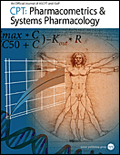
CPT-Pharmacometrics & Systems Pharmacology
Advancing drug discovery through innovative modeling.CPT-Pharmacometrics & Systems Pharmacology, published by WILEY, is a leading open access journal dedicated to advancing the fields of pharmacometrics and systems pharmacology. Since its inception in 2012, it has established itself as a vital resource for researchers and practitioners, boasting a remarkable impact factor and occupying prestigious Q1 quartiles in categories such as Cardiology and Cardiovascular Medicine, Modeling and Simulation, and Pharmacology (Medical). The journal covers a broad spectrum of topics aimed at enhancing the understanding of drug development, efficacy, and patient safety through innovative modeling and simulation approaches. With its consistent ranking in the top tiers of its field, CPT-Pharmacometrics & Systems Pharmacology provides invaluable insights and fosters scholarly dialogue among its audience, including researchers, educators, and students. The journal is accessible to all, promoting knowledge dissemination and collaborative growth in the pharmacology community.

JOURNAL OF PHARMACOKINETICS AND PHARMACODYNAMICS
Pioneering Discoveries in Drug BehaviorJOURNAL OF PHARMACOKINETICS AND PHARMACODYNAMICS, published by Springer/Plenum Publishers, stands as a vital resource in the field of pharmacology. With an ISSN of 1567-567X and an E-ISSN of 1573-8744, this journal is well-regarded within the academic community, as reflected in its Q2 ranking in the 2023 Scopus category for Pharmacology. Spanning years from 1996 to 2024, it serves as a comprehensive platform for cutting-edge research on the interactions of drugs within the body, their effects, and the underlying pharmacological mechanisms. The journal provides a critical avenue for dissemination of significant research findings, with a focus on enhancing understanding in pharmacokinetics, pharmacodynamics, and their implications in therapeutic practices. Targeting an audience of researchers, professionals, and students, the journal emphasizes high-quality manuscripts that contribute to the advancement of knowledge in pharmacology. Although currently not an open access journal, it maintains a strong commitment to promoting scientific communication and collaboration.

EUROPEAN JOURNAL OF PHARMACEUTICS AND BIOPHARMACEUTICS
Exploring the interface of formulation and biology.European Journal of Pharmaceutics and Biopharmaceutics is a leading academic journal published by Elsevier, dedicated to advancing the field of pharmaceutical sciences through high-quality research. Established in 1991, this multidisciplinary journal offers a platform for the dissemination of innovative findings in pharmaceutics and biopharmaceutics, covering crucial aspects such as drug formulation, delivery systems, and the interface of pharmaceutical formulation with biological systems. The journal is well-regarded for its impact, earning a Q1 status in Pharmaceutical Science and consistent Q2 rankings in both Biotechnology and Medicine (Miscellaneous) categories in 2023, thereby highlighting its significance in the scientific community. With an impressive Scopus ranking of 26th percentile in Pharmaceutical Science and 60th percentile in Biotechnology, it positions itself firmly at the forefront of research, supporting researchers, professionals, and students in their quest to address complex health challenges. While the journal does not offer an open-access option, it facilitates a rigorous peer-review process, ensuring that published articles meet the highest standards of scientific integrity. For those looking to make meaningful contributions to the field, the European Journal of Pharmaceutics and Biopharmaceutics serves as an essential resource and reference point.
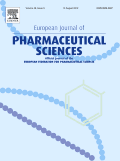
EUROPEAN JOURNAL OF PHARMACEUTICAL SCIENCES
Driving Excellence in Pharmaceutical Research and EducationThe European Journal of Pharmaceutical Sciences is a prestigious academic journal dedicated to advancing the field of pharmaceutical science. Published by Elsevier, the journal boasts an impressive impact factor and is categorized in the Q1 quartile for pharmaceutical science as of 2023, signifying its influence and reputation within the academic community. With a Scopus ranking of #20 out of 183 in the fields of pharmacology, toxicology, and pharmaceutics, the journal provides a vital platform for researchers and practitioners to disseminate innovative studies and groundbreaking research that push the boundaries of drug development and delivery. Based in the Netherlands and operating since 1993, the journal seeks to cover a broad scope of topics related to pharmaceutical sciences, encouraging rigorous evaluations and discussions that enhance the understanding and application of this critical field. The absence of open access underscores the commitment to maintaining high scholarly standards, while still offering avenues for libraries and institutions to provide access to cutting-edge research. As the journal converges towards its 2024 milestones, it continuously aims to foster a vibrant exchange of knowledge among its diverse readership, comprising committed researchers, professionals, and students.
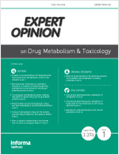
Expert Opinion on Drug Metabolism & Toxicology
Connecting Experts in Pharmacology and ToxicologyExpert Opinion on Drug Metabolism & Toxicology, published by Taylor & Francis Ltd, is a leading journal in the fields of pharmacology and toxicology, with a distinguished reputation gleaned from its Q1 rankings in both disciplines as of 2023. With an ISSN of 1742-5255 and an E-ISSN of 1744-7607, this journal aims to foster innovative discussions and critical insights into the metabolism and toxicological assessment of drugs, appealing to a wide audience of researchers, professionals, and students. The journal's commitment to maintaining high academic standards is reflected in its placement within the top quartiles of the Scopus rankings—ranked 17th in Toxicology and 73rd in Pharmacology—demonstrating its significant impact and relevance in advancing knowledge within the drug development sector. Published since 2005 and converging into 2024, it provides a platform for timely dissemination of expert opinions, systematic reviews, and original research, reinforcing its vital role in shaping the future of pharmacological sciences in an ever-evolving landscape.
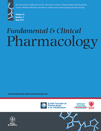
FUNDAMENTAL & CLINICAL PHARMACOLOGY
Advancing pharmacological knowledge for better health outcomes.FUNDAMENTAL & CLINICAL PHARMACOLOGY is a distinguished journal dedicated to advancing the fields of pharmacology and clinical medicine. Published by WILEY, this journal serves as a pivotal platform for researchers, healthcare professionals, and students alike to disseminate innovative research findings and clinical applications. With an impressive history spanning from 1987 to 2024, it has consistently maintained its relevance in the scientific community, evidenced by its Q2 quartile ranking in both Pharmacology and Pharmacology (medical) categories for 2023. The journal's diverse publication range, which includes original research articles, reviews, and clinical studies, helps bridge the gap between fundamental research and practical application in healthcare settings. Although it does not offer open access, its rigorous peer-review process ensures that published content meets the highest scholarly standards, making it a vital resource for those aiming to stay at the forefront of pharmacological sciences.

AAPS PHARMSCITECH
Pioneering Research in Pharmaceutical Sciences and TechnologyAAPS PHARMSCITECH is a prestigious peer-reviewed journal published by Springer, focusing on the dynamic field of pharmaceutical sciences and technology. With an ISSN of 1530-9932, it provides a vital platform for disseminating cutting-edge research that spans key areas including drug discovery, pharmacology, toxicology, and ecological impacts of pharmaceuticals. The journal is recognized for its rigorous scientific contributions, currently holding a commendable Q2 quartile ranking across several relevant categories, including Agronomy and Crop Science, Aquatic Science, and Medicine in 2023. Notably, it ranks 43rd out of 183 in the Scopus Pharmacology, Toxicology, and Pharmaceutics category, placing it in the 76th percentile of its field. Aiming to foster innovation and collaboration among researchers, professionals, and students, AAPS PHARMSCITECH is committed to advancing scientific knowledge and addressing contemporary challenges in pharmaceutical sciences. The journal offers various access options to ensure wide dissemination of research findings, making it an essential resource for those dedicated to enhancing public health through pharmaceutical advancements.

Clinical Pharmacology in Drug Development
Transforming clinical practices with groundbreaking research.Clinical Pharmacology in Drug Development, published by WILEY, is a distinguished journal dedicated to advancing the field of pharmaceutical science and drug development. With a strong commitment to disseminating cutting-edge research, this journal serves as a crucial platform for professionals, researchers, and students aiming to enhance their understanding of pharmacological principles and innovations in medical therapeutics. Since its inception in 2012, the journal has consistently maintained a noteworthy presence in the academic community, currently achieving a Q2 ranking in both Pharmaceutical Science and Medical Pharmacology categories as of 2023. Although the journal operates under a subscription model, it is highly regarded for its rigorous peer-reviewed publications, offering insights into drug efficacy, safety, and regulatory challenges. Positioned at the intersection of clinical practices and pharmaceutical advancements, Clinical Pharmacology in Drug Development plays an essential role in bridging the gap between scientific research and real-world application, ensuring that the latest therapeutic strategies are optimized for patient care.

Journal of Pharmaceutical Innovation
Advancing the Frontiers of Pharmaceutical ScienceThe Journal of Pharmaceutical Innovation, published by SPRINGER, serves as a vital resource in the fields of Pharmaceutical Science and Drug Discovery. With an ISSN of 1872-5120 and an E-ISSN of 1939-8042, this journal has been disseminating significant research findings since its inception in 2006. It is recognized for its rigorous peer-review process, maintaining a respectable ranking of Q2 in Pharmaceutical Science and Q3 in Drug Discovery as of 2023. Researchers and practitioners benefit from the journal's diverse scope, which encompasses innovative methodologies and advancements in pharmaceuticals, thereby fostering knowledge and collaboration within the scientific community. Although it does not offer Open Access options, the journal is accessible through institutional subscriptions and libraries, ensuring that critical insights in drug development and pharmacology reach a broad audience. The geographical presence of the journal in the United States underscores its influence in shaping the pharmaceutical landscape on a global scale.
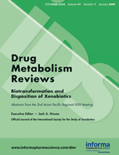
DRUG METABOLISM REVIEWS
Exploring the intricacies of drug metabolism.Drug Metabolism Reviews is a premier journal dedicated to the dissemination of scientific research and reviews in the field of pharmacology, toxicology, and pharmaceutics, published by Taylor & Francis Ltd. With its inception dating back to 1972, this journal has consistently provided an authoritative platform for scholars and professionals from diverse disciplines to explore the intricate mechanisms of drug metabolism and their implications for therapeutic applications. The journal enjoys commendable rankings, placing in the Q2 quartile for Pharmacology (medical) and the Q1 quartile in the miscellaneous subfield, signaling its significant impact within the community. Notably, it is recognized within the top 96th percentile in General Pharmacology, Toxicology and Pharmaceutics, affirming its esteemed position among academic publications. Although it operates under a subscription model, Drug Metabolism Reviews remains an essential resource for researchers, professionals, and students seeking to deepen their understanding of drug interactions, safety, and efficacy. The insights shared within its pages contribute vital knowledge to the global discourse on drug development and personalized medicine.